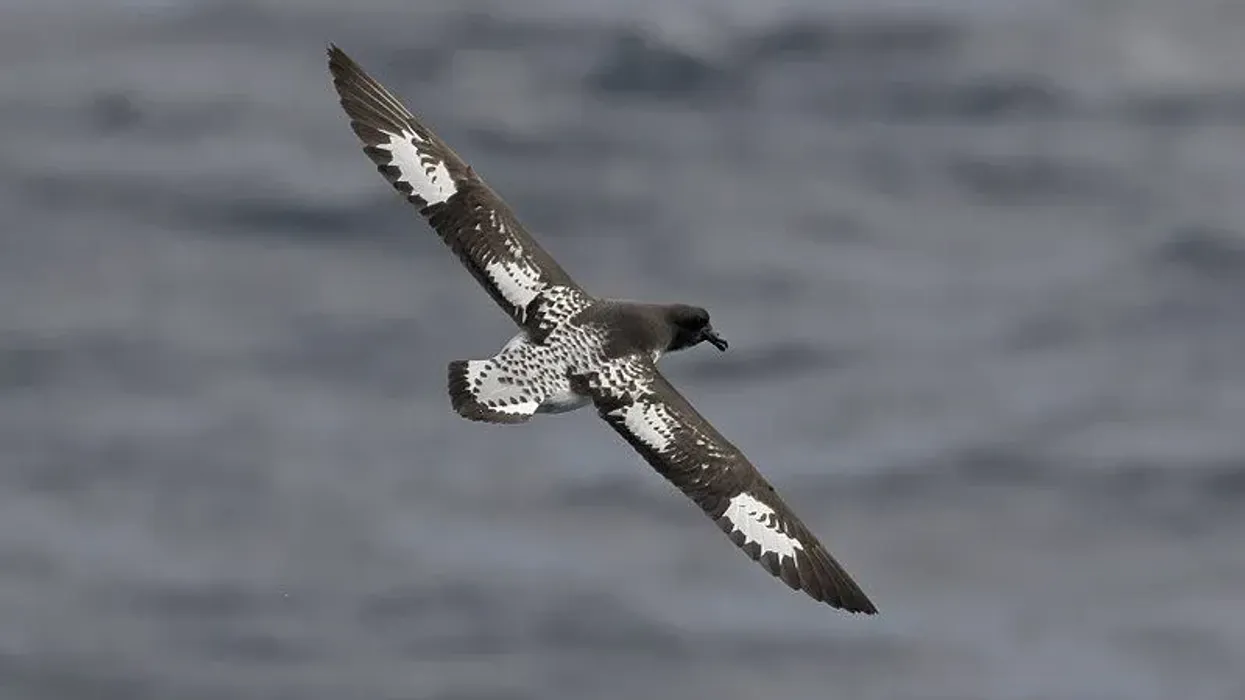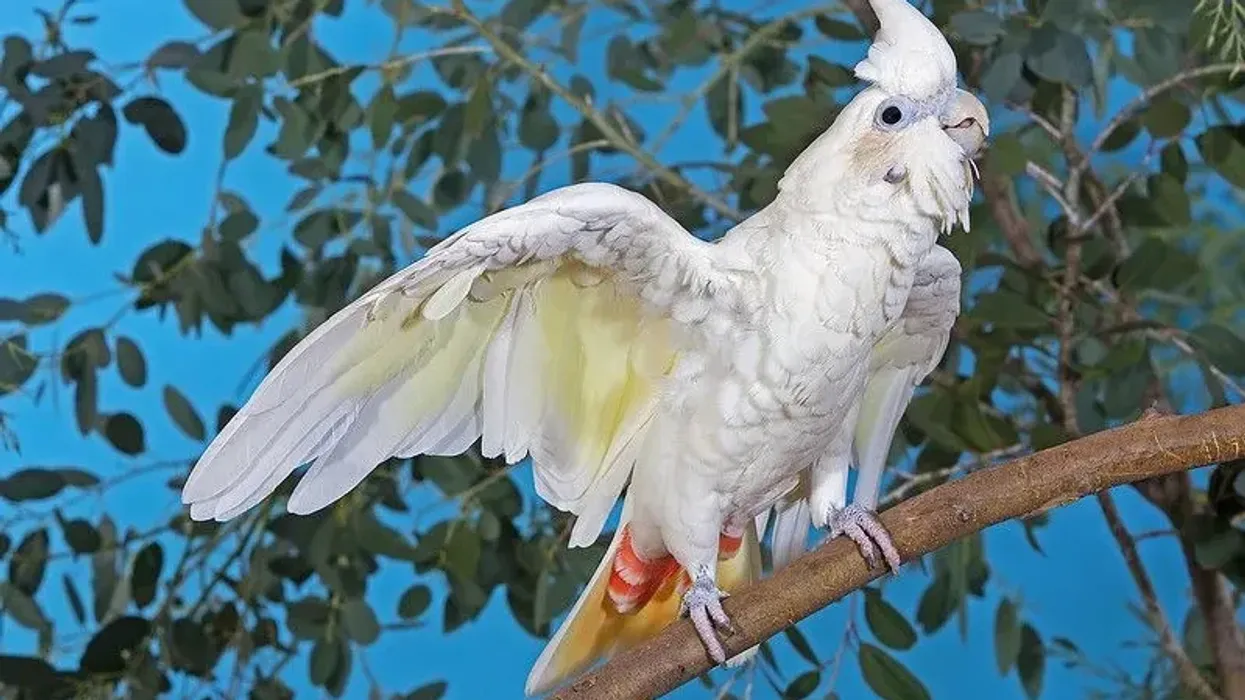The Cape petrel (Daption capense), also known as Cape pigeon, pintado petrel, or Cape fulmar, is a species of seabird commonly found in Antarctic and sub-Antarctic islands. They are migratory seabirds and tend to travel a lot.
Because of this, they are not endemic to one location. The Cape petrel is a member of the Daption genus and the Procellariidae family. These birds are divided into two subspecies, including Daption capense from sub-antarctic islands and Daption capense australe from the New Zealand sub-antarctic islands.
Cape petrels feed on fishes or crustaceans and are mainly carnivores. Their favorite fish to prey and feed on are krills.
Their upper parts of Cape petrel have a black and white pattern that looks painted. Their head is black and extends to the back in the form of spotting or mottling.
The bill, legs, and neck are also black, while the underparts are mostly white. They move north in winter and come back to the islands near Antarctica for nesting.
Cape petrels nest together in colonies on rocky cliffs and areas free from mammalian predators. When migrating, they do so in flocks. The breeding season of this species is from November to December.
The monogamous pair usually has breeding sites on islands near Antarctica, and only one egg is laid. It takes 45 days of mutual incubation for the egg to hatch.
Fledglings mature in 44-57 days and reach sexual maturity after five years. If you enjoyed reading about the Cape petrel, you could also check out these willow ptarmigan facts and Andean flamingo facts.
Cape Petrel Interesting Facts
What type of animal is a Cape petrel?
The Cape petrel (Daption capense) is a type of seabird found in the southern ocean of the Antarctic and sub-Antarctic islands as well as around the equator during winters. The two subspecies are Daption capense capense from sub-antarctic islands and Daption capense australe from the New Zealand subantarctic islands.
What class of animal does a Cape petrel belong to?
The Cape petrel belongs to the class of birds and a member of the Daption genus from the Procellariidae family. Their scientific name is Daption capense. Some other common names for this species are Cape pigeon, pintado petrel, and Cape fulmar.
How many Cape petrels are there in the world?
The Cape pigeon is one of the most common seabirds, with a population of around two million adults. Habitat loss, melting ice caps, and reduction of sea life due to man-made facilities are some reasons that may affect their population.
Where does a Cape petrel live?
Cape petrels are found in the coastal regions of Antarctica and the subantarctic Islands. The main breeding ground of these birds is the Antarctic Peninsula, South Georgia, Scotia Sea, Kerguelen Islands, and the Balleny Islands. Since they tend to migrate a lot, this species is not endemic to one location.
What is a Cape petrel's habitat?
Cape petrel (Daption capense) is a species of sea bird and is mostly found in coastal areas. They usually build their nests on clips or Rocky slopes, which are close to the sea.
They prefer staying in Antarctica or the sub-Antarctic region during the breeding season, but during winter, they follow their close parents beyond the continental shelf. Although it is observed avoiding pack ice, the Cape petrel can be seen foraging near icebergs.
Who does Cape petrel live with?
Cape petrels are a social breed and are often seen in colonies or flying in flocks of their species. They even nest in colonies and stay in pairs or with their families during the breeding season.
How long does a Cape petrel live?
The Cape petrel lifespan can range from 20-25 years in the wild. The maximum recorded age of a Cape petrel (Daption capense) is 27 years in New Zealand.
How do they reproduce?
The breeding season is from November to December in the islands surrounding Antarctica. The Cape petrel tends to migrate to colonies or breeding sites in September or the middle of October.
They form loose colonies and usually stay near the coast. Pairs are monogamous, and the Cape petrel usually builds their nest out of pebbles. They use rocky areas to their advantage and make their nests in a way that they are protected from rain or predators.
Females lay only one egg in November. The incubation period takes 45 days, and both males and females contribute equally. The Cape petrel tries to defend its nest by spitting stomach oil around it.
Both parents take care of the chicks, and the chicks fledge in 46-57 days. The fledgling will reach sexual maturity in about five years.
What is their conservation status?
The conservation status of Cape petrels is Least Concern, which means they are a fairly common bird and not threatened in any way.
Cape Petrel Fun Facts
What does a Cape petrel look like?
The Cape pigeon is a medium-sized bird with black and white color patterns on their body. They have a blackhead, bill, legs, and neck. They have a white belly, abdomen, and underwings.
The wings of these birds have a black border, and the upper parts are speckled with white. The tails of Cape petrels also have diagonal bands of black. The chicks living in breeding sites are usually brown and grow feathers as they age.
How cute are they?
The Cape petrel species is a common seabird that can be found in most places. The appearance is unique and shows a black-white pattern on their body, which makes these birds look very cute.
How do they communicate?
The communication of Cape petrels is a mixture of body language and sounds. When giving a greeting, they usually sway their heads together and make an identical call. While fighting over food, they can give a loud and aggressive call.
How big is a Cape petrel?
The average length of Cape petrels can range from 14.9-15.7 in (38-40 cm), and their wingspan is 31-35.4 in (80-90 cm). It is as big as a large pigeon.
How fast can a Cape petrel fly?
Cape petrels can fly at a speed of around 0.1 mph (18 m/s).
How much does a Cape petrel weigh?
The average weight of a Cape petrel is around 15.8-17 oz (450-480 g).
What are the male and female names of the species?
There are no specific names for the male and female Cape petrels.
What would you call a baby Cape petrel?
Baby Cape petrels are called a chick or a fledgling.
What do they eat?
Cape petrels feed on prey by swimming and pecking at the water. They can also dive into the water to filter and catch their prey. They feed on squid, krill, and other fishes that come near to the surface.
Krills from the Euphausia genus is the favorite crustacean food of the Cape petrel. The main predators of this bird are skuas. Other animals that fancy preying on krill are penguins, seals, and whales.
Are they poisonous?
Cape petrels are a seabird that is not poisonous or harmful to human beings at all. They usually do not interfere with humans and stay within their habitat. Sometimes they may try feeding on fish waste from fishing vessels.
Would they make a good pet?
The Cape petrel is a species of seabird that mainly resides in Antarctic and sub-Antarctic areas and prefers cold weather. They are also wild birds that will migrate into different areas. It is not a good idea to keep them as a pet because as a bird, they deserve to live and fly freely.
Did you know...
The name of the genus, Daption, is an Ancient Greek word that means 'little devourer.' In Spanish, they are called pintado, which means 'painted' due to their beautiful plumage.
The 'Cape ' in the name signifies the location they were first found at, and 'petrel' is taken from the story of St. Peter in which he walks on water, much like this bird that appears to have run on the water before it takes off.
Is the Cape pigeon endangered?
Cape petrels or the Cape pigeons are not endangered species, and their conservation status is Least Concern. This means that their population is relatively stable.
A study in 2009 has estimated the population to be around two million adults around the world. They feed on a variety of fishes and crustaceans, which means they do not have to suffer from food scarcity.
What is the wingspan of a Cape petrel?
The average wingspan of the Cape petrel is about 31-35.4 in (80-90 cm) and a length of 14.9-15.7 in (38-40 cm).
Here at Kidadl, we have carefully created lots of interesting family-friendly animal facts for everyone to discover! For more relatable content, check out these orchard oriole facts and ortolans facts pages.
You can even occupy yourself at home by coloring in one of our free printable cape petrel coloring pages.









